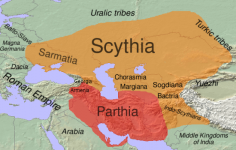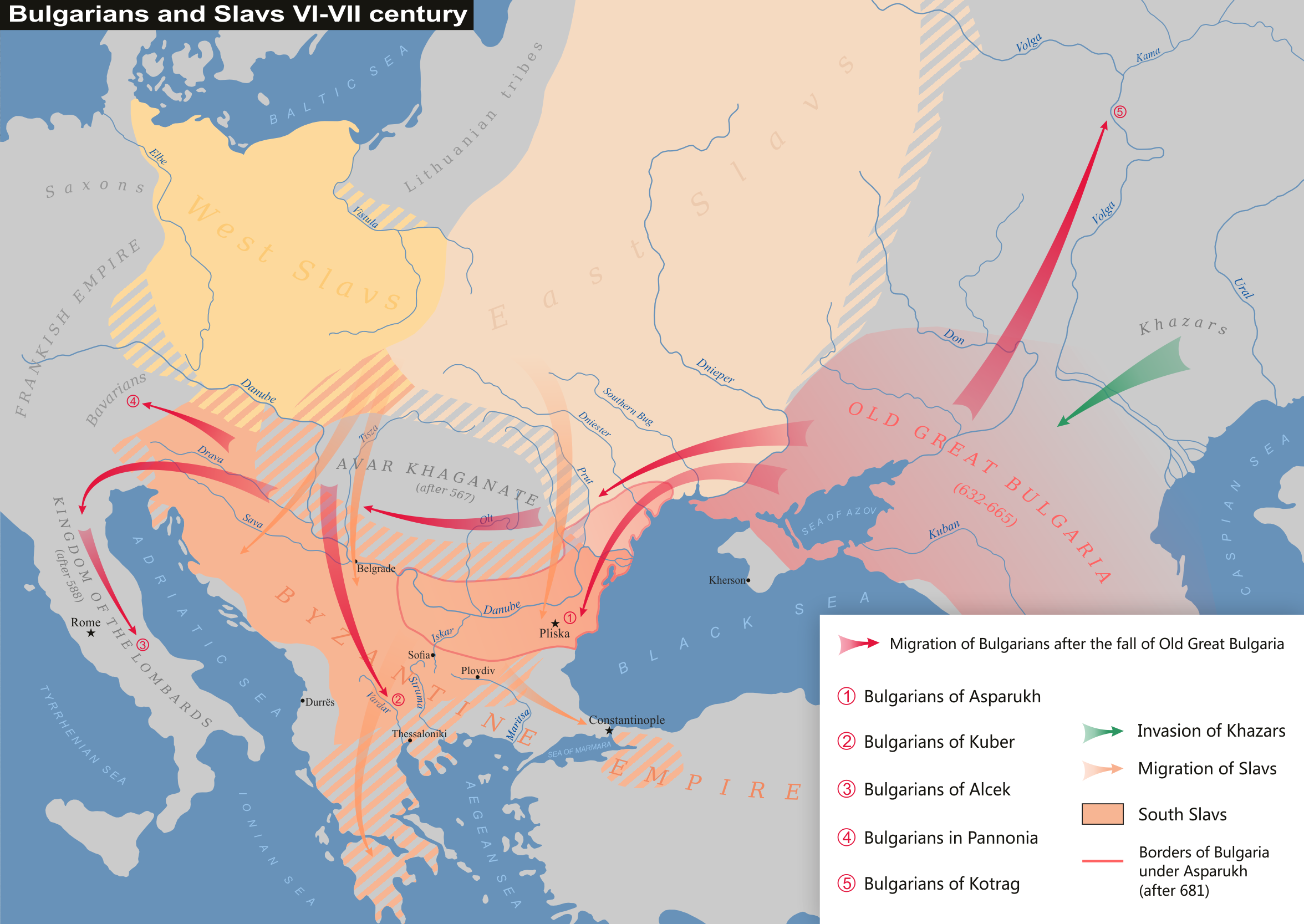Alan
Elite member
- Messages
- 2,517
- Reaction score
- 450
- Points
- 0
- Ethnic group
- Kurdish
- Y-DNA haplogroup
- R1a1a1
- mtDNA haplogroup
- HV2a1 +G13708A
On the Medes-Sarmatian connection
https://books.google.de/books?id=EM...=onepage&q=sarmatians medes herodotus&f=false
In ancient Texts (Bible, Tora, Quran) the Medes are reffered to as Madai. Herodotus and Greeks often called them Matiene and according to Greek_Roman sources the name Sauro-matae basically means "Lizard" Medes (probably because of their armor which resembled that of lizards).
Another source.

https://books.google.de/books?id=8p...=onepage&q=sarmatians medes herodotus&f=false
As we know and as I pointed out previously often enough. The Parthians themselves are directly descend of Medes (mostly Medes themselves) but had an early Scythian Elite admixture (the Arsacids).
https://en.wikipedia.org/wiki/Parthia
What became Parthians were simply the former Medes, this is visible not only in their culture and clothing (which is mostly Median with Scythian elements) but also from their language which is Northwest Iranic. When Parthians rised suddenly the Medes completely dissapeared from the display. Only a small Satrape (Media Atropatene) named after the former Empire, remained. But even the people in this Satrape were now identifying themselves as Parthians.
The Sarmatians might be another of those Median groups who migrated after the downfall of the Median Empire while the Medes remaining back home became something new, the Parthians.
Another important thing that points to a Median origin is that they worshipped the Fire and Sun/Sky typical for Western Iranic groups while the Scythians worshipped more the deities of nature.
All what Median tribes and their descends have in common when it comes to religion is that the Sun and Fire play a prominent role. Parthians being worshippers of Mithras the personification and deity of the sun and fire played a holy role.

the Medes are said to have formely called themselves Arianoi. Now the interesting part the term "Alan" is a corrupted version of the word Arian. The letters RI seem to have loudshifted into L.
Now to the most interesting part. One of the most commonly used names for the Alans is Alanoi.
http://pleiades.stoa.org/places/834278
Now taking into account the ri = l shift. Alanoi = Arianoi
And once again who called themselves Arianoi?
The peoples of Madai first dwelt in North-west Iran, being called the Medes along with Medan. Their capital was Hagmatana (Persian) or Agbatana in Greek. They were called Ma-da-ai, in the Assyrian inscriptions and became associated and linked up with the Medanites who invaded their territory from the west. Thus the names Madai and Medes were used interchangeably, but the Medanites formed the ruling class.
After the defeat of the Scythians in 584 BC, a colony of Medes was established along the Don River. They thus moved north of the Black Sea and into Scythia
The Greeks called them the Sauro-Matae and they spoke the Scythian tongue which was much like that of the peoples of Persia and were also known as Surmatai or Syrmatai. It would appear that many Elamites, who dwelt adjacent to the Madai in Iran, probably migrated with them into south-eastern Europe [see Is.21:2].
Many ancient writers refer to them. Strabo mentions the Matiani or Matieni as does Herodotus and Pliny. Ammianus Marcellinus speaks of the Sauro-matians dwelling near the Hister (modern Danube). We also know that the Sea of Azov was anciently known as Maeotis Palus; on its shores dwelt the Maioti or Maiotiki.
The Sarmatian dagger and sword used by these people were exactly like that of the Medes. Researcher, Sulimirski, maintains that "the Sarmatians were...closely akin to the ancient Medes, Parthians and Persians."
Rostovtzeff wrote that "the Scythian kingdom—a formation almost completely Iranian, a northern counter-part of the kingdom of Darius and Xerxes...the Sarmatians, whose Iranian nationality is not disputed".
Herodotus wrote that the Medes were beginning to settle in the Ukraine even in his time. He maintained that there was a people who "dress in the Median fashion" and who "claim to be colonists from Media" that "live north of Thrace...beyond the Danube". Pliny noted that "Next come the two mouths of the river Don, where the inhabitants are the Sarmatae, said to be descended from the Medes".
https://books.google.de/books?id=EM...=onepage&q=sarmatians medes herodotus&f=false
In ancient Texts (Bible, Tora, Quran) the Medes are reffered to as Madai. Herodotus and Greeks often called them Matiene and according to Greek_Roman sources the name Sauro-matae basically means "Lizard" Medes (probably because of their armor which resembled that of lizards).
Another source.

https://books.google.de/books?id=8p...=onepage&q=sarmatians medes herodotus&f=false
As we know and as I pointed out previously often enough. The Parthians themselves are directly descend of Medes (mostly Medes themselves) but had an early Scythian Elite admixture (the Arsacids).
As the region inhabited by Parthians, Parthia first appears as a political entity in Achaemenid lists of governorates ("satrapies") under their dominion. Prior to this, the people of the region seem to have been subjects of the Medes,
https://en.wikipedia.org/wiki/Parthia
What became Parthians were simply the former Medes, this is visible not only in their culture and clothing (which is mostly Median with Scythian elements) but also from their language which is Northwest Iranic. When Parthians rised suddenly the Medes completely dissapeared from the display. Only a small Satrape (Media Atropatene) named after the former Empire, remained. But even the people in this Satrape were now identifying themselves as Parthians.
The Sarmatians might be another of those Median groups who migrated after the downfall of the Median Empire while the Medes remaining back home became something new, the Parthians.
Another important thing that points to a Median origin is that they worshipped the Fire and Sun/Sky typical for Western Iranic groups while the Scythians worshipped more the deities of nature.
All what Median tribes and their descends have in common when it comes to religion is that the Sun and Fire play a prominent role. Parthians being worshippers of Mithras the personification and deity of the sun and fire played a holy role.

the Medes are said to have formely called themselves Arianoi. Now the interesting part the term "Alan" is a corrupted version of the word Arian. The letters RI seem to have loudshifted into L.
Now to the most interesting part. One of the most commonly used names for the Alans is Alanoi.
http://pleiades.stoa.org/places/834278
Now taking into account the ri = l shift. Alanoi = Arianoi
And once again who called themselves Arianoi?
Last edited:





